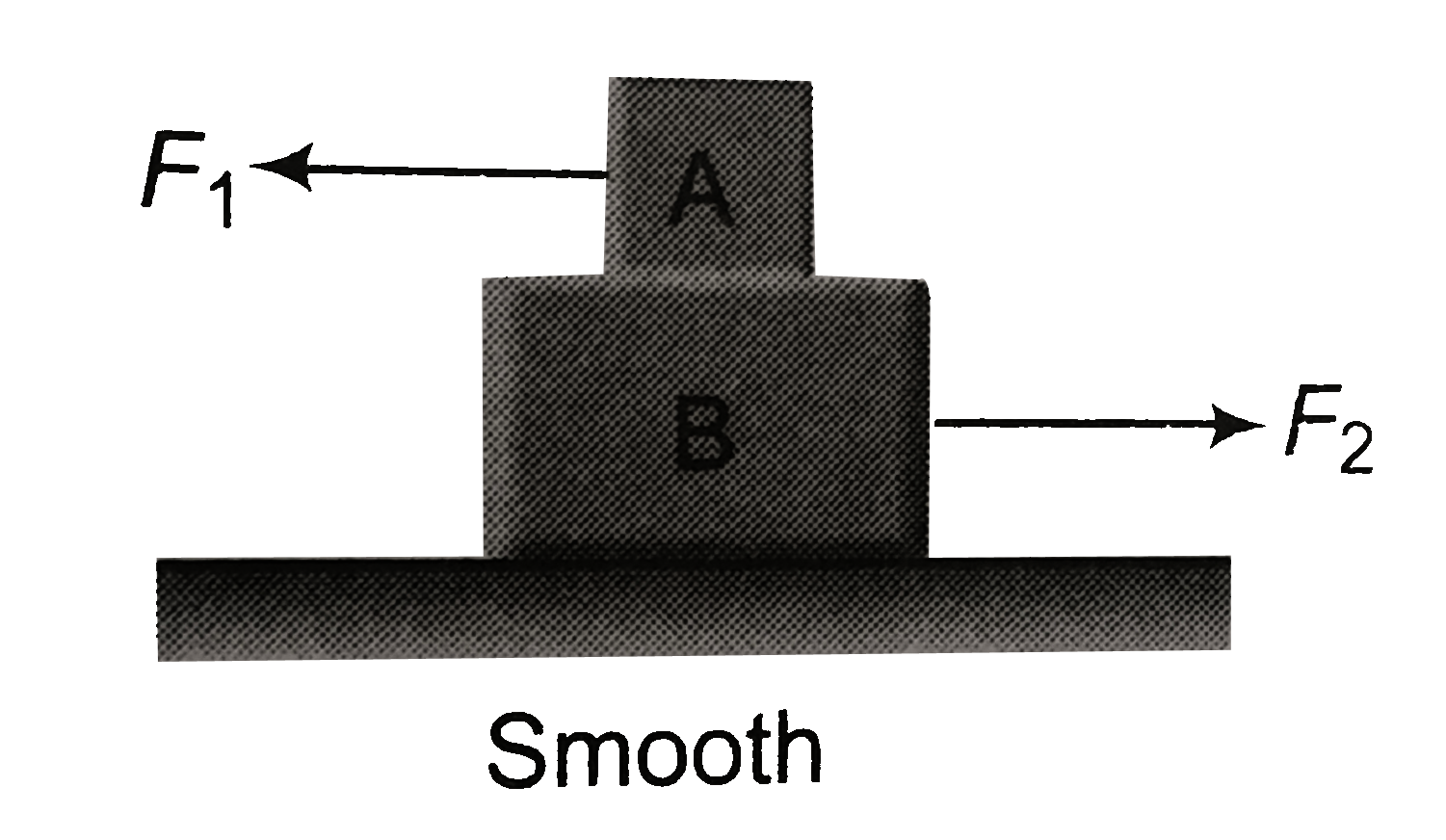Does friction always oppose the motion?
Step-by-Step Solution:
1. Understanding Friction: Friction is a force that arises when two surfaces interact. It can act in different directions depending on the relative motion between the surfaces in contact.
2. Friction Opposing Relative Motion: The key point to note is that friction always opposes the relative motion between two surfaces. This means that friction acts in the direction opposite to the movement of one surface relative to the other.
3. Example of a Block on a Rough Floor:
- Consider a block resting on a rough floor. If the block is moving forward with a velocity v, the relative motion between the block and the floor is also forward.
- In this case, the frictional force acts backward, opposing the motion of the block. Thus, it is correct to say that friction opposes the motion of the block.
4. Example of a Person Walking:
- Now, consider a person walking on the same rough floor. When the person pushes backward against the ground with a force F, the ground exerts a frictional force on the person's foot.
- This frictional force acts in the forward direction, allowing the person to move forward. Here, while the person is moving forward, the friction is not opposing the motion; instead, it is supporting it.
5. Conclusion:
- Therefore, we conclude that friction does not always oppose motion. It opposes the relative motion between two surfaces. In some cases, it can act in the direction of motion, as seen in the example of a person walking.
- Consider a block resting on a rough floor. If the block is moving forward with a velocity v, the relative motion between the block and the floor is also forward.
- In this case, the frictional force acts backward, opposing the motion of the block. Thus, it is correct to say that friction opposes the motion of the block.
- Now, consider a person walking on the same rough floor. When the person pushes backward against the ground with a force F, the ground exerts a frictional force on the person's foot.
- This frictional force acts in the forward direction, allowing the person to move forward. Here, while the person is moving forward, the friction is not opposing the motion; instead, it is supporting it.
- Therefore, we conclude that friction does not always oppose motion. It opposes the relative motion between two surfaces. In some cases, it can act in the direction of motion, as seen in the example of a person walking.
Similar Questions
Assertion : The force of tension on a body always act away from the body.
Reason: Friction force always opposes the motion of a body.
View SolutionAssertion: Frictional force is the component of contact force parallel to the surface.
Reason: Friction force always opposes the motion of a body.
View Solution
Knowledge Check
Assertion: Friction opposes relative motion and thereby dissipates power in the from of heat.
Reason: Friction is always an undesirable force.AIf both assertion and reason are true and reason is the correct explanation of assertion.BIf both assertion and reason are true and reason is the not correct explanation of assertion.CIf assertion is true but reason is falseDIf both assertion and reason are false.
Viscous force is somewhat like friction as it opposes the motion and is non-conservative but not exactly so because
View SolutionIn the figure shown, force of friction on A from B will always be right wards
Friction always opposes the relative motion between two bodies in contact.

View SolutionSTATEMENT -1 : Friction always opposes motion .
STATEMENT - 2 : Lesser the friction on a surface it is easier to walk on it.
STATEMENT -3 : Soles of shoes gets flat due to friction .
View SolutionStatement 1: While drawing a line on a paper by pencil, friction force acts on paper in the same direction along which line is drawn on the paper. Statement 2: Friction always opposes motion.
View SolutionA : In the presence of air resistance, if the ball is thrown vertically upwards then time of ascent is less than the time of descent.
R : Force due to air friction always acts opposite to the motion of the body.
View SolutionAn elevator that can carry a maximum load of 1500 kg (elvator+ passengers) is moving up with a constant speed of 2 ms−1. The frictional force opposing the motion is 3000 N. Find the minmum power delvered by the motor to the elevator in watts as well as in horse power (g=10ms−2)
View SolutionA : Work done by friction can increase the kinetic energy of the body.
R : Friction is a type of contact force and it always opposes the relative motion or tendency of relative motion.
View Solution